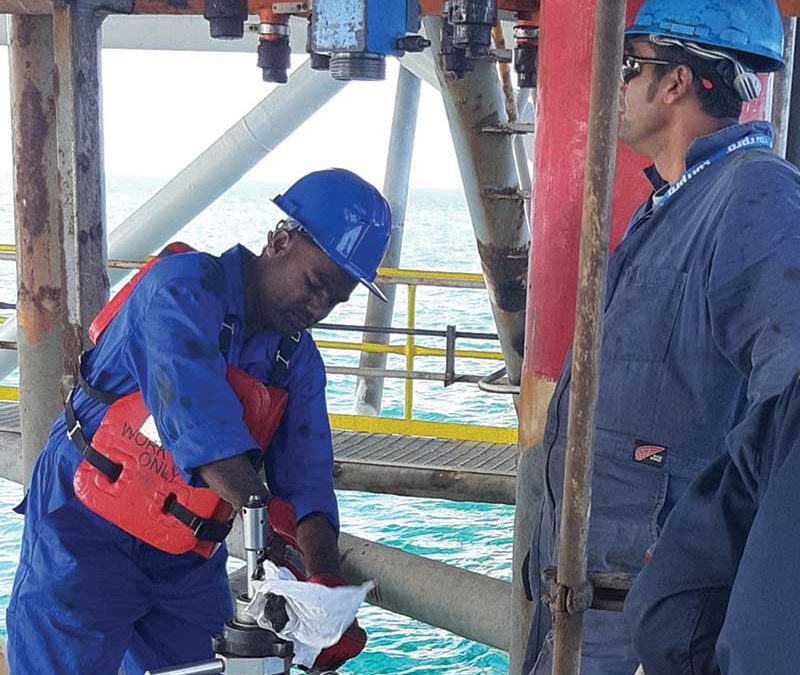5 Levels of CP Certification
If you work in cathodic protection, you must be certified as competent to do so. This applies around the world, and the Institute of Corrosion (ICorr) has upgraded its courses to fully meet the requirements of the rewritten cathodic protection competence standard – BS EN ISO 15257:2017.
In this article, we introduce the standard and discuss who it applies to.
The aim of BS EN ISO 15257:2017
The standard defines five levels of competence for those working in cathodic protection (CP), and specifies a framework within which competence is established at each of these levels.
It specifies the minimum skills, knowledge, and experience a person must have to be certified as competent across each of the disciplines within the CP field, including survey, design, installation, testing, maintenance, and monitoring of CP.
The standard started as a British Standard and European Normative (BS EN) in 2006. “The rewritten ISO standard gives objective criteria and credentials that allow clients to know who is legitimate and who is selling snake oil,”, says Chris Wozencroft, Principal Engineer at Corrosion Engineering Solutions Ltd. and member of ICorr’s CP Governing Board (CPGB).
Do you need to be certified?
If you are a ‘cathodic protection person’, you should be certified as competent. The standard defines a cathodic protection person as someone ‘who devotes a regular and significant percentage of professional activity to the practical application of cathodic protection within one or more of the application sectors’.
Levels of competence
The standard sets out the five levels of competence with each step up in level including competence in the levels below. The competence levels are set out as follows:
Level 1: Cathodic Protection Data Collector (or Tester)
This certification allows you to collect CP performance data and perform other basic CP tasks requested of you by someone of Level 3 or higher. At this level, you won’t be responsible for analysing data, but you should have a good understanding of the measurements and causes of errors in them.
Level 2: Cathodic Protection Technician
When certified at Level 2, you shall be deemed competent to undertake a range of CP measurement, inspection, and supervisory activities that are delegated to you by persons at Level 3 or higher. However, you will not be responsible for determining the test method or technique to be used, or for the preparation of technical instructions and interpretation of results.
Level 3: Cathodic Protection Senior Technician
At Level 3, you will demonstrate that you have knowledge of the:
- General principles of corrosion and CP
- Principles of electricity
- Significance of coatings and their influence on CP
You will also possess a detailed knowledge of CP test procedures and safety issues, and be able to prepare technical instructions for all lower-level CP persons, as well as assess all data collected from these tasks.
Level 4: Cathodic Protection Specialist
With a detailed knowledge of corrosion theory, principles of electricity, CP design, installation, commissioning, testing, and performance evaluation (including systems affected by interfering conditions), you could be certified at Level 4.
You can now design CP systems, define guidelines for monitoring them, and prepare technical instructions for all CP persons of lower levels.
Level 5: Cathodic Protection Expert
This is an honorary title for PhD qualified CP professionals, who have demonstrated all the competencies required in at lest one sector, together with a range of competencies in other sectors at the highest level, such as
- Undertaking a range of high-level activities such as management of R&D projects
- Publications in technical or scientific journals or books, lectures at congresses or training courses
- Participation in standardisation or technical committees
- Leading in the development of new technology or new applications
- Editing scientific journals
Are you certified as competent in CP?
As you can see, ISO 12527:2017 provides a linear path of certification at specified levels of competence. This means that clients are better able to identify the person they need for specific projects and tasks, and you can prove your competency with your certification.
Under the previous standard, there were only three levels, which equate to Levels 2, 3, and 4 in the new standard.
The new scheme that has been developed based on ISO 15257:2017 has three elements:
- Training
- Examination
- Certification
Certification is important because you need to prove you have experience before being certified as competent. With a discipline like CP, and a science that still holds so many uncertainties, it is unacceptable that someone should be able to leave college, take an exam, and be immediately deemed as competent.
“You really do need a few years on the ground before you know what you’re doing in this game,” says Chris Wozencroft.
In our next article, we discuss the double-edged approach of certification in CP, and examine the application sectors to which the competence levels apply.
In the meantime, to learn more about the Certification Scheme for Cathodic Protection Personnel, email the Institute of Corrosion at admin@icorr.org.

